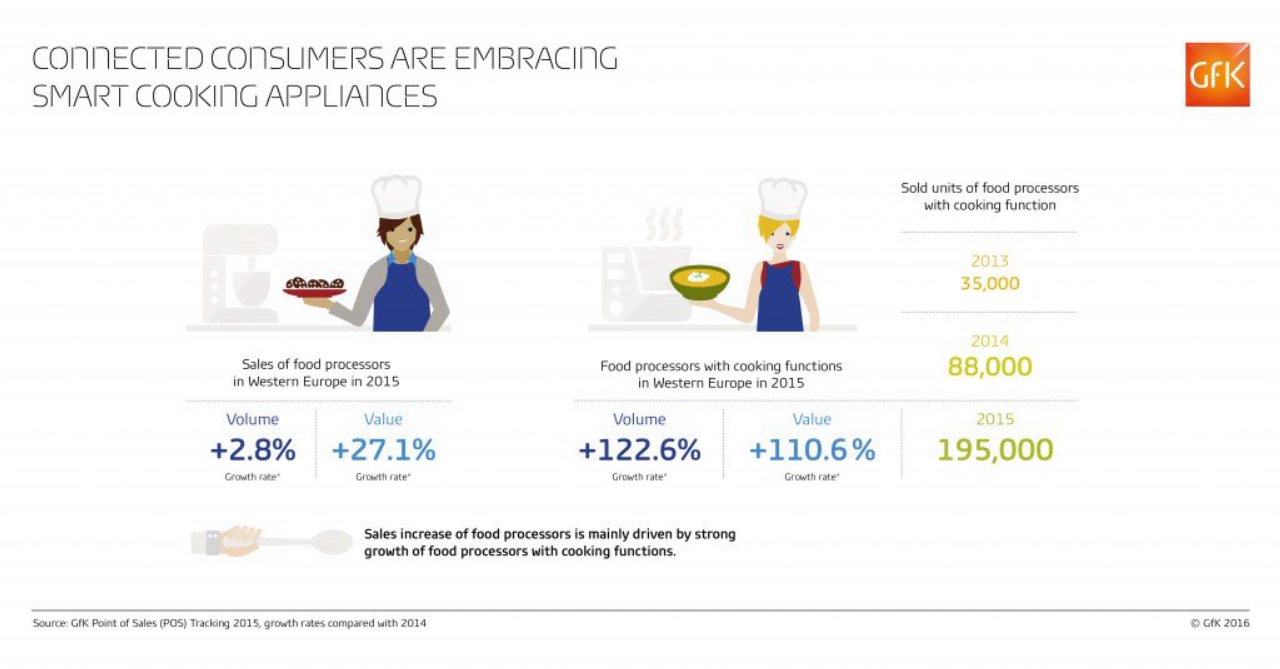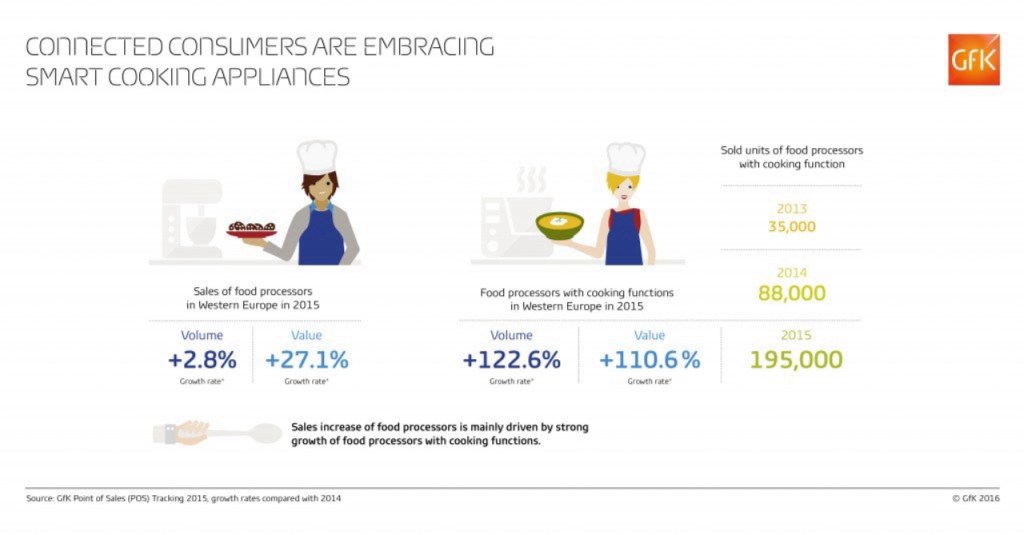Small “smart” appliances such as vacuum cleaning robots or automated espresso machines have the potential to remove the drudgery associated with household tasks for today’s connected consumers. For households that own them, these devices can free up valuable time and energy. One of the most rapidly growing segments in the smart small appliance market is kitchen machines, sales of which are experiencing explosive growth as “guided cooking”, a concept that provides consumers helpful guidance for every step of their meal preparation, takes hold.
In 2015, sales of kitchen machines in Western Europe increased by 3.2% in volume compared with 2014, and 3.7% in value. Food processors – a product segment very similar to kitchen machines – increased by 2.8% in volume and 27.1% in value as a result of strong growth in those appliances featuring cooking functions.
Connected Consumers are embracing smart cooking appliances
Kitchen machines and food processors offer two great benefits: convenience and ease. Like other “smart” domestic appliances, they appeal because they make our lives easier. The ability to automate many of the time-consuming, repetitive tasks associated with cooking healthy, nutritious meals is hugely attractive for consumers. Many are turning to smart guided cooking machines from brands such as KitchenAid and Moulinex to do the weighing, chopping and cooking for them – all in one machine. Connected Consumers it seems are embracing smarter cooking:
- In 2015, 195,000 food processors with cooking functions were sold in Western Europe compared to just 88.000 in 2014.
- Revenues for food processors with cooking functions have, superficially, more than doubled in Western Europe

Prices start to fall as more brands enter the market
A sharp increase in revenues for food processors with cooking functions has been accompanied by a slight softening of the average sales price. In 2014, the average device retailed at 492 Euros. However, the retail price of the average device fell by more than 5% in 2015 to 465 Euros. We see similar trends in other sectors, where new brands enter the market using a lower price point to compete against dominant players that have often created and successfully commanded the market.
The benefits of smart cooking appliances are easy to digest
For some smart appliances, communicating the benefits to consumers is easier than others. This is certainly the case with cooking machines, which people understand make the preparation of fresh, healthy and nutritious meals that suit the taste of the whole family much easier. Connected Consumers crave both simplicity and efficiency. Guided cooking is an area where “smart” delivers “simplification” perfectly, and that’s a recipe that many connected consumers find too good to resist.
Can you resist? Please contact me at Thilo.Heyder@gfk.com to share your thoughts.
Find out more about the smart appliances in our Smart Home study.



